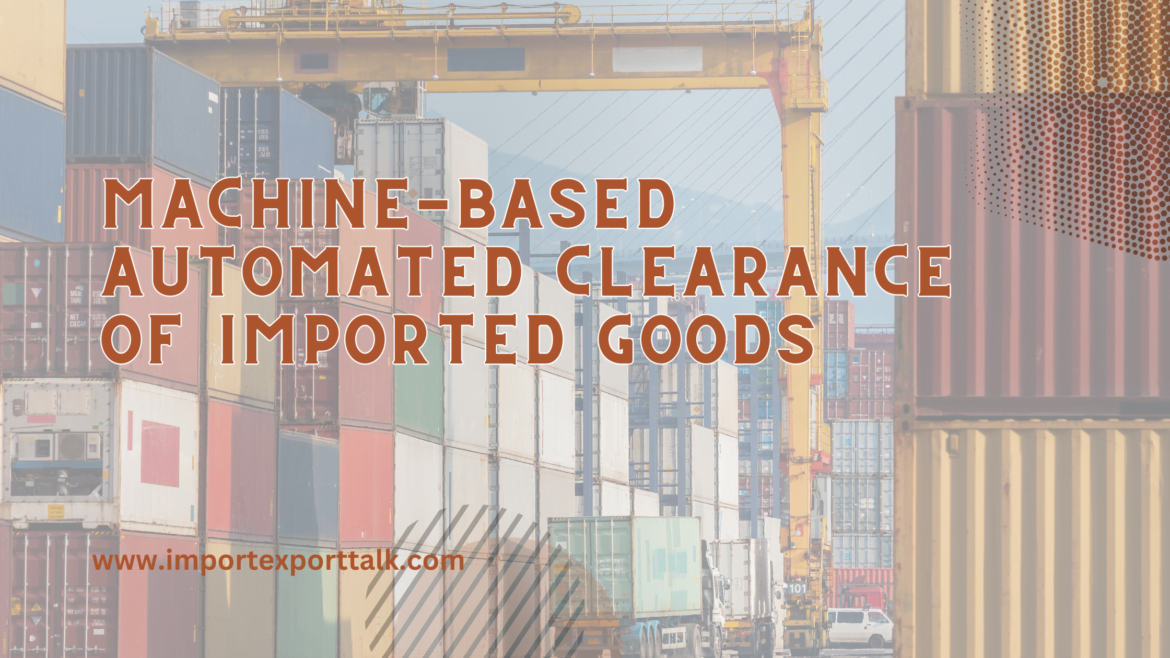The Central Board of Indirect Taxes and Customs (CBIC) introduces machine-based automated clearance of imported goods. The system, which was launched as a pilot in February 2020, is designed to reduce the time and cost of importing goods into India. This groundbreaking initiative aims to leverage cutting-edge technologies, such as artificial intelligence (AI) and machine learning, to streamline the customs clearance process for imported goods. We will explore the impact of this innovative system on trade efficiency, revenue collection, and the ease of doing business in India. Join us as we delve into the advantages, challenges, and implications of CBIC’s machine-based automated clearance system.
Understanding CBIC’s Machine-Based Automated Clearance
The Machine-Based Automated Clearance system by CBIC is a technological advancement that aims to revolutionize the customs clearance process for imported goods. It employs sophisticated AI algorithms and machine learning to automate and expedite the assessment, inspection, and release of imported shipments at customs ports.
Advantages of Machine-Based Automated Clearance
The introduction of this advanced clearance system offers several key advantages for importers, customs authorities, and the overall trade ecosystem. These benefits include accelerated processing times, enhanced accuracy in tariff classification and valuation, reduced paperwork, and improved transparency in the clearance process.
Impact on Trade Efficiency and Ease of Doing Business
CBIC’s machine-based automated clearance system is expected to significantly improve trade efficiency in India. By expediting the customs clearance process, businesses can receive their imported goods faster, leading to reduced lead times and enhanced supply chain management. Additionally, this technological leap can bolster India’s ranking in the World Bank’s Ease of Doing Business Index, making the country more attractive to investors and foreign trade partners.
Enhanced Revenue Collection and Fraud Detection
The automation of customs clearance through AI and machine learning can also lead to improved revenue collection for the government. The system’s accuracy in tariff classification and valuation ensures that the correct import duties and taxes are levied, minimizing revenue leakage. Moreover, the advanced algorithms can detect potential instances of fraud and under-invoicing, safeguarding the nation’s fiscal interests.
Integration of Risk Management and Compliance
CBIC’s automated clearance system incorporates robust risk management capabilities. By analyzing historical data and patterns, the system can identify high-risk shipments, enabling customs officials to prioritize inspections and enhance border security. Furthermore, the system promotes compliance with trade regulations, ensuring that imports adhere to the country’s safety, health, and environmental standards.
Challenges and Implementation Issues
While the Machine-Based Automated Clearance system offers immense potential, it also poses challenges that need to be addressed. These challenges include the need for substantial technological investments, training of customs personnel in handling automated systems, and ensuring seamless integration with existing customs procedures.
Ensuring Data Privacy and Cybersecurity
With the automation of customs clearance, a significant amount of sensitive data is generated and processed. It is essential for CBIC to prioritize data privacy and cybersecurity to protect the information from unauthorized access or breaches.
Collaboration with Stakeholders
To maximize the benefits of the automated clearance system, collaboration with various stakeholders is vital. CBIC must engage with importers, customs brokers, industry associations, and technology providers to gain valuable insights and ensure the system’s smooth functioning.
Periodic Review and Continuous Improvement
A machine-based automated clearance system is not static; it requires periodic review and continuous improvement. CBIC must analyze performance metrics, user feedback, and technological advancements to refine the system and stay ahead in the rapidly evolving trade landscape.
CBIC INTRODUCES MACHINE RELEASE OF GOODS
CBIC’s introduction of Machine-Based Automated Clearance of Imported Goods marks a transformative step towards modernizing India’s trade ecosystem. By harnessing AI and machine learning, this advanced system promises to boost trade efficiency, enhance revenue collection, and promote ease of doing business. To overcome challenges and ensure successful implementation, CBIC must prioritize collaboration, data privacy, and continuous improvement. With this innovative approach, India is set to solidify its position as a competitive player in the global trade arena.
A Comprehensive Guide on Importing Samples from Foreign Countries


2 comments
[…] CBIC’s introduction of Machine-Based Automated Clearance of Imported Goods […]
[…] CBIC Introduces Machine-Based Automated Clearance of Imported Goods […]